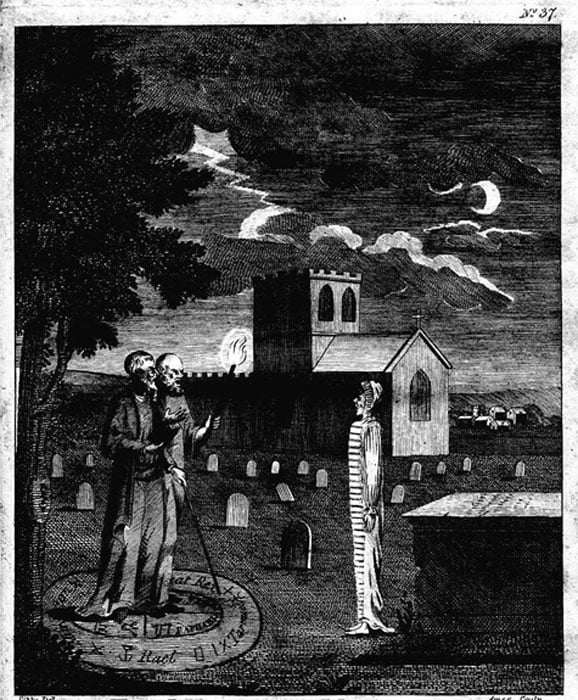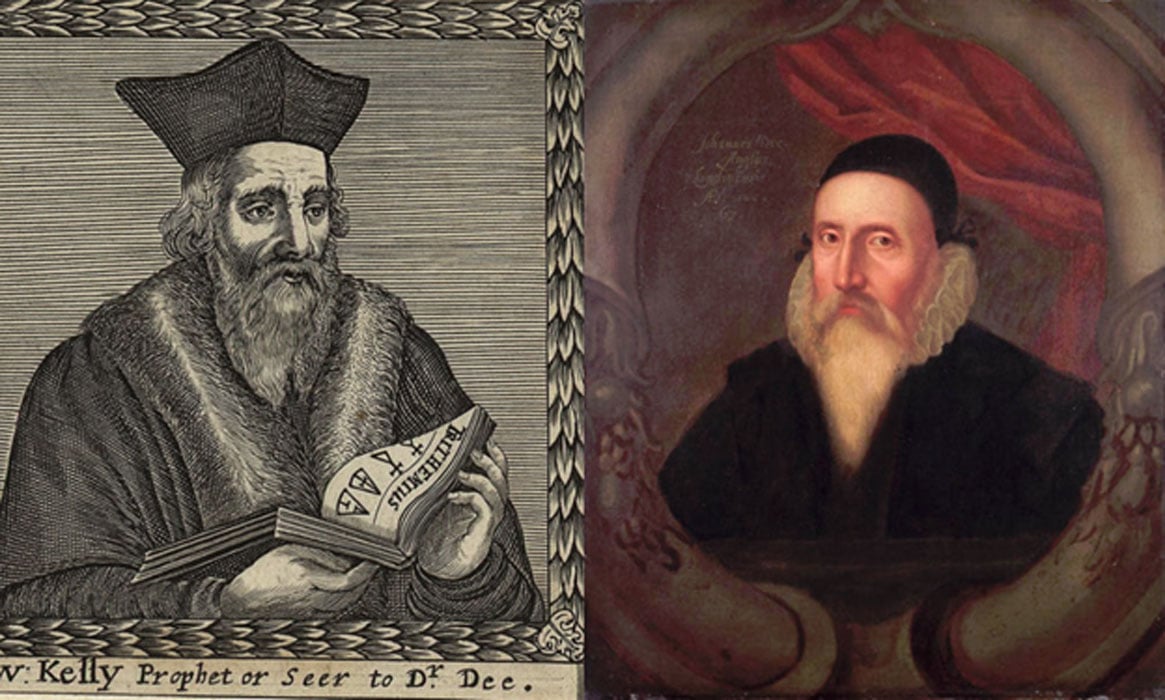Following the Magical Journey to Poland by John Dee and Edward Kelley
For centuries, Poland has been considered a very Christian country. However, over the ages some of the rulers of Poland still searched for supernatural support. The belief in the power of witchcraft has been strong since the beginning of the country’s existence.
Bishops hoped that with the conversion of Poland to Christianity in 966 AD all of the pagan cults and faith in the powers of ancient gods, nature, etc., would leave the minds of the people who lived near the Vistula River. But that didn’t happen, and even during the strongest influence of the Catholic Church in Poland people followed the path of magic, pagan rites, and witchcraft.
In the 16th century, Poland was ruled by the last king of the Jagiellon Dynasty and Stephen Bathory, a Hungarian, who married Anna Jagiellon, daughter of Sigismund I and his wife Bona Sforza. He was a son of Stephen VIII Bathory and Catherine Telegdi in Transylvania. Bathory was elected as King of Poland and the Grand Duke of Lithuania in 1576. When he came to Poland after the long rule of the Jagiellon Dynasty he found the country in bad shape. Although Bathory was only on the throne for a decade, the time of his reign was one of the most successful periods in Poland’s history.
A Magician to Royalty
John Dee is one of the most mysterious people of 16th century England. He was an astronomer, astrologer, mathematician, and adviser to Queen Elizabeth I.

John Dee performing an experiment before Queen Elizabeth I. Oil painting by Henry Gillard Glindoni. (Public Domain)
Dee traveled around Europe as a scientist, alchemist, and philosopher but sometimes he used other talents as well. He was invited to visit with many royal families who were curious about his magical abilities. Many rulers hoped to receive special advice from the magician on how to become more powerful, wealthier, or win battles. Dee was one of the first supporters of Copernicus’ theory and he also supposedly knew how to communicate with ghosts via mirrors.
- John Dee: Scholar, Astrologer, and Occult Practitioner that Captivated the Royal Court of 16th Century England
- X-Ray Images Show Hidden Features in Painting of the Enigmatic John Dee
- Bloody Mary: The Marriage, Reign, and Death of a Queen of England
Great fame increased the appreciation of Dee’s protector – Elizabeth I, who was his supporter and considered him one of the most trustworthy people in her court. In 1582, Dee met Edward Kelley, a talented medium and alchemist. Together, they created one of the most fascinating occult duos in history.

‘A Magician’ by Edward Kelly. (Public Domain)
An Angelic Misunderstanding
On September 17, 1583, John Dee, Edward Kelly, and their relatives began their journey to far away Poland. This trip was the result of a meeting with the Polish nobleman Albert Łaski, also known as Olbracht Łaski. Łaski was an alchemist and son of Hieronim Łaski, who was one of the Polish supporters of the Ottoman Empire during the war with the Habsburg dynasty. Albert Łaski was fascinated with the talents of Dee and Kelley and he wanted to introduce them to Stephen Bathory. Łaski was active as an artist and politician as well.

Olbracht Łaski. (Public Domain)
Łaski lived an adventurous life, traveled around the world, and perhaps hoped to work for the king. However, he had lost his fortune. Thus, he hoped to bring Dee to Poland to get his position in society back. Łaski arrived in England in April 1583 with a goal, which he accomplished – to return to his homeland with the most mysterious alchemist of Europe.
Dee and Kelley hoped that the trip to Poland would bring them all the benefits Łaski promised them. The Polish nobleman told them that he was very wealthy and said that the Polish king want to meet the men. The truth was that Bathory wasn't interested in meeting with Dee, who was already known to be Elizabeth I’s spy. Nonetheless, Bathory was fascinated with magic and finally he decided to meet with Dee and Kelley.
The meeting with Bathory took place in the castle at Niepołomice, near Crackow. The king asked for guidance and prophecy from ''angels''. It is unknown exactly what the men told him, but reports say that John Dee’s prophecies did not come true, and the disappointed king lost faith in the magician’s talents.

John Dee and Edward Kelly evoking a spirit. (Public Domain)
Revenge of the Alchemist?
King Stephen Bathory died on December 12, 1586, of an unknown cause in Grodno (now Belarus.) Many people on his court believed that his death could have been John Dee's revenge. Bishops and noblemen blamed the king for asking the magicians for help, and they imagined that his demise could have been his punishment from God.
It is, however, not likely that Dee hurt the Polish king. Bathory probably died from the diseases he was struggling with for many years. But for many decades, people wondered if his death wasn't due to a demon or a spell that was put on him by John Dee.

King Stephen Bathory by Jan Matejko. (Public Domain)
After the visit in Crackow, Dee and Kelley traveled to other destinations in Central Europe, including the court of Rudolph II in Prague, Czech Republic. Rudolph was as fascinated with alchemy as Bathory was, but he didn't want to listen to Dee.
Separation
He was interested instead in Edward Kelley’s visions. In Prague, the two great alchemists saw each other for the last time. Dee couldn't stand Kelley’s fame, and he blamed him for using his fame for Kelley’s advancement. In 1589, Dee went back to England.
- Enochian: The Mysterious Lost Language of Angels
- The Enigma of the Voynich Manuscript: History or Hoax?
- Holy Conversations: The Impact of the Mysterious Book of Soyga
John Dee died in Mortlake around 1608 or 1609, at age 82. He died as a poor and forgotten old man, without any funding from the king. Nowadays, it is hard to find Dee’s grave. The tombstone was lost over the centuries and the parish books disappeared.
Łaski, on the other hand, found his protector in the king who replaced Bathory, Sigismund III Vasa. For his part, Kelley stayed in the Czech Republic and died there in 1597.

John Dee memorial plaque installed in 2013 inside the church of St Mary the Virgin Mortlake. (CC BY-SA 3.0)
Top image: Edward Kelley (Public Domain) and John Dee. (Public Domain)
















